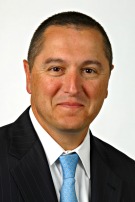North American buysiders are now following the lead of their European counterparts and preparing for impending regulations affecting the way institutional traders will pay for research.
Independent broker ITG today released a survey where it posed several questions to buy-side traders about how they will contend with the looming Markets in Financial Instruments Directive II (MiFID II), a sweeping set of European Union financial regulations scheduled to come into force on January 3, 2018.
Under MiFID II rules, asset managers will be required to explicitly separate, or unbundle,their trading commissions from investment research payments. In order to continue paying for research alongside executions, asset managers will be required to set up a research payment account (RPA).

While MiFID II has been a primary concern for European traders, now traders in North America are facing the new regulation and making battle plans on how to comply with it. The ITG survey polled more than 100 buyside professionals who participated in an ITG webinar on the impact of MiFID II regulations on North American asset managers. The buyside firms – hedge funds and long-onlys – that participated represent institutional investors with assets under management (AUM) ranging from approximately $125 million to more than $1 trillion, with average AUM of $47 billion.
Less than half those surveyed, 43%, of asset managers expect MiFID II to have a direct impact on them. The regulations apply to asset managers with operations in the EU and may also impact asset managers who have sub-advisory agreements with EU investment managers or that sell and manage European mutual fund vehicles known as UCITS.
ITGs Head of Global Commission Management, Jack Pollina, told Traders Magazine that in looking at this number, long-only investors were more concerned than their hedge fund counterparts. Hedge funds, he explained, have less international operations, didnt work with as many sub advisors who are internationally domiciled and would not be impacted by the regulations and are looking at regulatory obligations on a as needed basis.
However, when it came to how managers will pay for research, the numbers were significantly higher. Nearly 60% of those surveyed plan to continue paying for research using commission sharing arrangements (CSAs), while 33% expect to use a combination of both CSA and RPA for payments and 8% plan to set up a new RPA ahead of the MiFID II start date.
I expect to see more CSA usage in the future from North American asset managers and RPAs to grow in popularity in Europe, Pollina said. I also expect to see the concept of unbundling continue to increase here in the U.S.
And when it comes to unbundling – the process of separating execution fees and payments for research – a whopping 82% of North American firms plan to fully unbundle all of their brokers globally.
In the U.S. many asset managers dont have the option to run an RPA as the SEC views commissions as the property of a broker and not the asset manager,Pollina said. In Europe, the research charge or dollars are the legal property of the manager. So in Europe, all managers will have to migrate to RPAs.
For RPAs to gain traction in the U.S., the SEC, he explained, would have to change its view on commissions and allow the dollars to be placed in the asset managers name. Also the SEC will need to address the payment of research particularly to bulge research firms in hard dollars, something mandatory in Europe under MiFID and not currently a practice in the U.S.
Perhaps well see some type of CSA with a RPA ring fence hybrid evolve here in the U.S., Pollina said.
Pollina said In the end, it will not be enough for a U.S. registered manager to say they are not affected by MiFID II, they will be impacted investors expecting the same transparence as they receive from global managers as well as for marketing reasons
ITG offers both traditional CSA as well as RPA administration and aggregation services.




